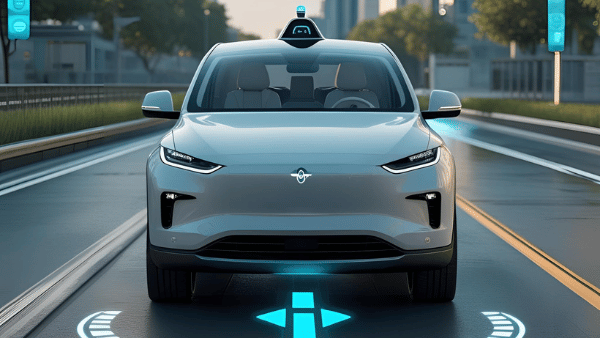AI Co-Pilots at Work: Revolutionizing Productivity in 2025

In 2025, the integration of AI Co-Pilots at Work is no longer a concept of the future; it’s our new reality. Across industries, from startups to Fortune 500s, these AI-powered digital assistants are reshaping how we collaborate, make decisions, and manage tasks. With remote and hybrid work models now the norm, organizations are turning to AI not only to automate the mundane but also to enhance human creativity, strategy, and productivity.
What Are AI Co-Pilots?
An AI Co-Pilot at Work is a contextual, intelligent assistant embedded within software tools and platforms that professionals use every day—like Microsoft 365, Notion, Slack, Google Docs, and even internal enterprise systems. Unlike static automation tools, AI Co-Pilots understand user behavior, context, and intent. They don’t just follow commands—they suggest, generate, organize, and predict. These assistants are always learning, adapting their responses to align better with the user’s goals and company objectives.
How AI Co-Pilots Work
AI Co-Pilots leverage large language models, real-time analytics, and contextual data to perform a variety of functions. For instance, in Microsoft Word, an AI Co-Pilot can co-write an entire report based on your rough notes. In Slack, it can summarize long threads and assign tasks automatically. In Google Sheets, it can detect anomalies in financial data and suggest corrective actions.
These AI agents often integrate with multiple tools simultaneously, creating a seamless, connected workflow that mimics the behavior of a knowledgeable assistant. This interconnectivity across applications is what truly enables AI Co-Pilots to redefine productivity.
Real-World Use Cases Across Departments
In Marketing:
AI Co-Pilots can draft social media content, generate A/B testing ideas, and even analyze campaign metrics in real-time. Marketers save hours every week by automating the first draft of content and refining it instead of starting from scratch.
In Human Resources:
From drafting job descriptions and screening CVs to answering employee queries through conversational AI, Co-Pilots speed up recruitment cycles and improve employee engagement.
In Finance:
AI Co-Pilots can create budgets, track real-time expenses, and generate financial forecasts. For example, an executive could ask their Co-Pilot: “What’s our projected Q3 revenue if expenses rise by 10%?” and receive a reliable model within seconds.
In Customer Support:
AI agents assist support teams by auto-generating replies, escalating issues intelligently, and even suggesting knowledge base updates based on frequently asked questions.
In Leadership and Strategy:
Senior executives use AI Co-Pilots to synthesize reports, compare performance metrics, and receive real-time alerts on KPIs. Decision-making becomes more data-driven and less guesswork-oriented.
Why AI Co-Pilots Are Gaining Momentum in 2025
The widespread adoption of AI Co-Pilots is largely due to their accessibility, accuracy, and adaptability. Companies no longer need to develop complex AI systems in-house. Cloud-based platforms offer plug-and-play solutions, making them easy to implement even for mid-sized businesses. With increasing demands for faster execution, minimal errors, and strategic agility, AI Co-Pilots offer a competitive edge by saving time, reducing cost, and elevating output quality.
Potential Challenges and Ethical Concerns
Despite their benefits, AI Co-Pilots are not without challenges. The most pressing concerns include:
-
Data Privacy: Sensitive company information is constantly being processed. Ensuring this data doesn’t leave the organizational firewall is critical.
-
Bias in AI Decisions: Algorithms trained on biased data can make flawed recommendations, especially in hiring or content moderation.
-
Overreliance: Employees may rely too heavily on AI, stunting creativity or overlooking nuanced decisions that require human judgment.
To mitigate these risks, organizations must set boundaries, define human-in-the-loop processes, and offer training to ensure responsible AI usage.
The Future of AI Co-Pilots in the Workplace
Looking ahead, AI Co-Pilots will likely become more intuitive and proactive. Instead of reacting to commands, they’ll anticipate needs. For instance, before a sales call, your Co-Pilot might prepare a competitor analysis or highlight the client’s recent social media mentions. Over time, these assistants may develop emotional intelligence cues, adjusting tone and communication style based on the user’s mood or work habits.
For businesses seeking to stay ahead of digital transformation, platforms like The Visionary Spark explore how innovation leaders are deploying these tools. Industry reports, like this McKinsey analysis on AI in the workforce, provide compelling evidence that early adopters of AI Co-Pilots are outperforming peers on operational and financial metrics.
Final Thoughts:
AI Co-Pilots at Work are not here to replace humans—they’re here to enhance our capabilities. By eliminating routine, low-value tasks, these intelligent systems allow professionals to focus on what truly matters: creativity, collaboration, and innovation.
In a world that demands speed and precision, AI Co-Pilots are not just a luxury—they’re becoming a necessity. Businesses that embrace them early will gain a significant edge in efficiency, adaptability, and strategic execution.



